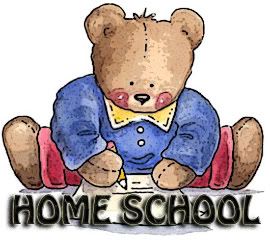So, since Mother's Day is this Sunday, I decided to lay out the art supplies, give some general guidelines, ask the older ones to monitor and help the younger ones, print out a few overly gushy poems that I'll probably cry over when I'm old enough to have grandkids, and let them loose!
What they created made me cry...and not because of the GIANT mess they made with the glitter!
The Handprint Poem is a classic, and you can find variations of it all over the internet. Here are a few that I love:
This is the hand
You used to hold
When I was only
(fill in an age) years old.
You used to hold
When I was only
(fill in an age) years old.
-----
I miss you when we're not together
I'm growing up so fast
See how big I've gotten
Since you saw me last?
As I grow, I'll change a lot,
The years will fly right by.
You'll wonder how I grew so quick -
When and where and why?
So save this print in a safe place
And take it out each year.
The memories will come back of me,
When I was small and dear.
I'm growing up so fast
See how big I've gotten
Since you saw me last?
As I grow, I'll change a lot,
The years will fly right by.
You'll wonder how I grew so quick -
When and where and why?
So save this print in a safe place
And take it out each year.
The memories will come back of me,
When I was small and dear.
-----
My dirty little fingerprints
I've left on every wall,
And on the drawers and table tops,
I've really marked them all.
But here is one that won't rub off,
I'm giving it to you,
Because I'm thankful for a (mother, father, brother, sister) just like you!
I've left on every wall,
And on the drawers and table tops,
I've really marked them all.
But here is one that won't rub off,
I'm giving it to you,
Because I'm thankful for a (mother, father, brother, sister) just like you!
-----
Sometimes you get discouraged
Because I am so small,
And always leave my fingerprints
On furniture and walls.
But everyday I'm growing,
I'll be grown up someday,
And all these tiny handprints
Will simply fade away.
So here's a final handprint
Just so you can recall,
Exactly how my fingers looked
When I was very small.
Because I am so small,
And always leave my fingerprints
On furniture and walls.
But everyday I'm growing,
I'll be grown up someday,
And all these tiny handprints
Will simply fade away.
So here's a final handprint
Just so you can recall,
Exactly how my fingers looked
When I was very small.
-----
This is to remind youWhen I have grown so tall,
That once I was quite little
And my hands were very small
-----
This is my hand.
My hand will do
A thousand loving things for you
And you will remember
When I am tall...
That once my hand
Was just this small.
My hand will do
A thousand loving things for you
And you will remember
When I am tall...
That once my hand
Was just this small.
-----
I give my hand
to you this day!
Remember me now,
as I grow and play!
-----
Here my handprints are doneFor everyone to view
I had so much fun
Doing this for you.
-----
So look upon this handprint plaque
Hanging on your wall,
And memories will come back
Of me when I was small.
-----
There are always so many of my fingerprints to see,On the furniture and walls from sticky, grubby me,
But if you stop and think a while,
You'll see I'm growing fast,
Those little handprints will disappear,
You can't bring back the past.
So here's a small reminder,
To keep not throw away,
Of how those tiny hands once looked,
To make you smile one day.
-----
Ten tiny fingers, that always want to play,That never stop exploring that wonder of today,
Ten tiny fingers, that from the very start,
Will reach out for tomorrow yet always hold your heart.
-----
These little hands can wave helloOr put smudges on the wall.
They can fold in prayer,
Throw a kiss or
Reach up when I say, "so tall."
They will clasp your hand for an Autumn stroll.
Or shape a dinosaur from clay.
But most of all, they will stay with you
When I'm grown and far away.









